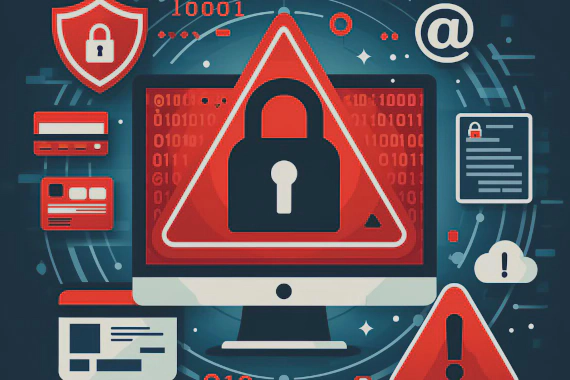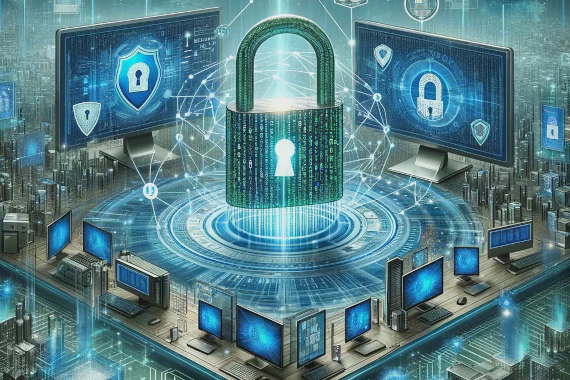
Data Breach Statistics: Breaches, ATO, Ransomware & Fraud
Top data breach statistics 30% of attacks exploited valid accounts to gain initial access, this represents the most …

Have you been burned by bad dark web monitoring tools that were nothing but snake oil?
Want a way to differentiate between the wheat and the chaff?
According to the IBM Cost of a Data Breach Report 2023 report, it took organizations over 200 days to identify a breach and then another 73 days to contain it.
The same study showed the correlation between how long it took to contain the breach to the overall cost of the breach.
According to the Verizon Data Breach Investigations Report, 86% of breaches involve stolen, weak, or default passwords.
Security teams need dark web monitoring tools to reset their leaked credentials before they’re exploited.
In this post, we’ll cover what dark web monitoring is, the features you need, and the top 10 tools out there today.
Dark web monitoring is a service that involves scanning, searching, and analyzing the dark web to identify and track the illegal trading or sharing of sensitive information, such as credentials, financial information, intellectual property, or other confidential materials.
The dark web is a part of the internet that is not indexed by traditional search engines. This includes not only tor sites, but Telegram channels and dark web forums requiring authentication.
The purpose of dark web monitoring is to help organizations detect if their sensitive information has been compromised and is being sold or shared on the dark web.
By identifying the issue early, they can mitigate the risk before criminals exploit the data. Typical actions include updating passwords, implementing security measures based on the leaked data, or alerting authorities.
Dark web monitoring services use various tools to scan private websites, criminal forums, and marketplaces on the dark web, looking for specific data such as email addresses, social security numbers, credit card numbers, session tokens, internal company documents, or other sensitive information.
In order to understand how dark web monitoring tools work, it’s important to understand what causes data breaches in the first place.
Data breaches occur for a number of reasons. These range from technological vulnerabilities to human error.
Here are the top 5 primary data breach causes:
RECOMMENDED READING: 5 Most Common Causes of Data Breaches
Dark web monitoring is essential for any company with access to sensitive data.
Common use cases include:
RECOMMENDED READING: How To Find Data Breaches
Dark web monitoring is an essential tool in an organization’s cyber defenses.
When looking for a dark web monitoring solution, there are several key features to consider:
RECOMMENDED READING: The 15 Best Dark Web Monitoring Tools for MSPs
Breachsense provides a real-time data breach monitoring solution to help organizations protect against online fraud, account takeovers, and upcoming attacks. The platform indexes a large variety of sources, including third-party breaches, stealer logs, leaked session cookies, employee credentials, and company data leaked or sold on the dark web. Leaked data from criminal markets, ransomware attacks, and upcoming attacks are indexed as well.
Breachsense supports automated alerts via multiple channels whenever sensitive data is exposed and integrates seamlessly with existing security SIEM and SOC solutions. Breachsense is particularly useful for offensive security teams, mid-market to large enterprises, and government organizations.
ZeroFox specializes in digital risk protection with a focus on social media and brand security. The platform monitors social media platforms for threats and provides phishing detection and takedown services. It is designed to protect organizations from digital threats that can impact brand reputation and customer trust. ZeroFox is ideal for mid-market to high-end enterprises with a significant online presence and brand image concerns.
Heroic provides cybersecurity solutions focused on threat detection and response. The company’s services include analytics and incident response capabilities to identify and mitigate various cyber threats. Heroic’s approach aims to defend against digital risks before they escalate. Their solutions are a good fit for large enterprises.
SpyCloud offers solutions for preventing account takeovers and exposing data breaches, with an emphasis on dark web monitoring. The platform analyzes breach data for recovery and helps secure user and employee accounts from fraud and identity theft. It’s tailored to combat online fraud and protect sensitive data, making it suitable for large enterprises.
HackNotice provides a threat intelligence platform offering real-time alerts and personalized risk analysis. It focuses on improving cybersecurity awareness and protection for individuals and businesses. The service monitors for data breaches and provides actionable security information, making it a valuable tool for individuals and businesses of all sizes.
Have I Been Pwned is a widely-used online service that allows individuals to check if their personal data was compromised in a 3rd party data breach. It offers a searchable database of exposed credentials and provides notifications for new breaches. This service is geared towards individuals concerned about online privacy and security.
Cyber Intelligence House offers cyber exposure analysis and vulnerability detection services. It helps organizations assess their online assets and identify security weaknesses. The company’s solutions are geared towards providing vulnerability management, making them suitable for mid to large-sized enterprises.
Constella Intelligence provides identity monitoring and fraud detection services. The platform is designed to protect organizations from identity theft and digital fraud. Constella Intelligence is ideal for mid-market to large enterprises.
Flashpoint specializes in Business Risk Intelligence derived from dark web insights. The company provides intelligence solutions, including threat actor mapping and monitoring of criminal marketplaces. Its services are tailored for large enterprises and government entities.
Flare provides a cybersecurity platform that specializes in dark web monitoring and threat exposure management. It offers automated threat detection across millions of dark web data points, providing businesses with actionable intelligence to make informed decisions about their security risks.

Top data breach statistics 30% of attacks exploited valid accounts to gain initial access, this represents the most …

What is Data Leak Detection Software? Data Leak Detection Software is a specialized security solution that helps …